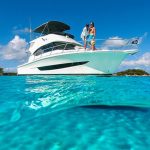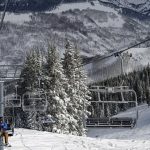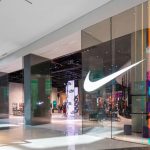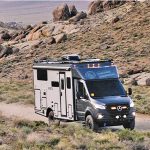Billabong International Limited grew its sales in Asia, lowered its losses in Europe and is on track to increase sales in the United States for the first time in years, the company's CEO told investors last week.
After a year of frenetic restructuring, which included the sale of the Dakine, Nixon and West 49, businesses, the Australian company reported revenues shrank 9.2 percent, or 5.0 percent in currency-neutral (c-n) terms, to AUD$1.22 billion ($1.12 bn) for the fiscal year ended June 30.
The Americas accounted for $98.0 million, or 80 percent, of the sales decline, as revenues fell off 5.5 percent, (-9.9 percent c-n). The region's performance was weighed down by a weak Canadian action sports market, a restructuring in Brazil and declines in the U.S. market, where teen spending remains muted.
Wholesale revenues fell by AUD$3.0 million in Canada in the second half and fell by AUD$6.5 million in Brazil. Retail bricks-and-mortar revenues for North America were driven down in part by store closures. Comp store sales were down 6 percent for the half, reflecting weak US retail store traffic across the industry. While still down from year ago levels, U.S. comp store sales improved in the second half of the fiscal year. By comparison, same-store stores sales increased 5.9 percent in Europe and 1.3 percent in Australasia. BBG operated 424 retail stores as of June 30, including 64 in North America.
Excluding discontinued businesses, sales in the Americas decreased 9.9 percent c-n to AUD$442.6 million ($406mm), inclusive of an 11.9 percent decline in the second half. Comp store sales were down 3.3 percent for the year and 6.2 percent for the half, reflecting weak US retail traffic data. Including direct to consumer e-commerce revenue, comparable retail sales were up 1 percent for the year and down 2.9 percent for the half.
Gross margins were down 300 basis points for the year and 430 for the second half, driven primarily by higher markdowns, as BBG took aggressive action to get inventories in line.
“Throughout FY14, the Americas suffered the hangover effect of poor buying decisions in prior year periods, a historic tendency to overbuy inventory and lack of good inventory management practices,” said Billabong CEO and Managing Director Neil Fiske. “This has led to margin compression. We are fixing the problem first, by taking the tough, but necessary decisions to clear inventory and secondly, by installing the rigorous inventory disciplines going forward.”
The Americas segment turned in earnings before income taxes, depreciation, amortization and impairments, or EBITDAI, of -AUD$49.0 million (-$45mm) compared with positive EBITDAI of $19.5 million ($20mm) a year earlier.
“Our biggest challenge and our greatest opportunity in the 12 months ahead is the Americas,” said Fiske. “The good news is that Billabong and RVCA, which represent close to two thirds of the region’s brand sales, are seeing signs of growth in the US wholesale market.”
The end of the fiscal year marks the first phase of Billabong’s turnaround under Fiske, who took the helm in September, 2013 at the request of two private equity firms that recapitalized the company. Since then, Fiske and the board have laid out a turnaround strategy, restructured and recruited a new senior leadership team. By selling off valuable but noncore brands, restructuring operations in Europe, South Africa, Brazil and Asia; converting Chile and Peru to distributor models and closing 41 stores, management cut overhead costs $22.6 million.
In fiscal 2015, the focus will shift the hard work of growing the business. In the Western Hemisphere, the effort will be led Americas President Ed Leasure, who is now rebuilding the sales and marketing teams for each of the three core brands to generate more top line momentum. Felipe Motta, vice president/Latin America has relocated to Brazil “for as long as it takes” to get BBG’s operations there back on track, said Fiske. Billabong has also relocated global brand leadership, the turnaround office and new global support functions to the United States to be closer to the company’s largest market.
Fiske said he is seeing progress accelerate. In the United States, for instance, Billabong's pre-season wholesale orders for fall and spring deliveries are rising for the first time in several years.
“Billabong is our largest brand in our portfolio and the first to implement our global brand approach so these trends are very encouraging,” said Fiske.
Other signs of progress include increases in forward orders for RVCA in the Americas; positive results from recently opened mono-brand stores and a 27 percent increase in mono-brand e-commerce revenue in the United States thus far in 2014. The company has also improved store level profitability by 210 basis points.
Store level profitability increased by 210 basis points and management thinks it can grow it another 210 basis points in fiscal 2015.
But BBG will have to pay as it goes, by cutting costs in some areas to improve cash flow so it can pay for growth initiatives in other areas, such as brand building. The company has filled 63 key positions so far this year largely with money saved through productivity gains and reductions in head count.
In fiscal 2015, initiatives include establishing a global supply chain operation and overhauling the company’s Asian sourcing operation under a new VP of supply chain. BBG expects to close another 22 underperforming stores and use $35 million in proceeds from the pending sale of multi-brand online retailers SurfStitch and Swell to pay for the redesign of its global logistics and distribution network and the establishment of global IT and Direct-to-Consumer platform groups that will run online stores for Billabong, RVCA and Element. Consolidating each brand’s e-commerce operations on a single platform should generate immediate cost savings.
Fiske cautioned that it will take time for all the changes to flow through to the bottom line, given the complexity of the turnaround, lead times, the “bedding down of new leadership and structures,” and tough trading conditions in many markets, including the United States, where teen spending remains weak.
“It would be hard to take any comfort at this point in a rebound in the overall teen market,” said Fiske. “That's not where our improvements are going to come from. Our improvement is going to come from things that we can control and our own operations.”
“The good news is that our two largest brands, Billabong and RVCA are projecting growth this year in US wholesale based on forward orders,” Fiske said. “These two brands represent nearly two-thirds of the region's brand sales. The Element turnaround will take some time and Brazil and Canada will remain soft. There’s much more work to do and the road ahead remains challenging.”












